The new 5G network lets us access the Internet and load our favourite videos at lightning speed. But beyond that, the shift to 5G has a potentially significant impact on the way we approach homeland operations too. That’s why we held a joint trial with DSTA to prepare our Home Team’s assets to better utilise the next-generation network.
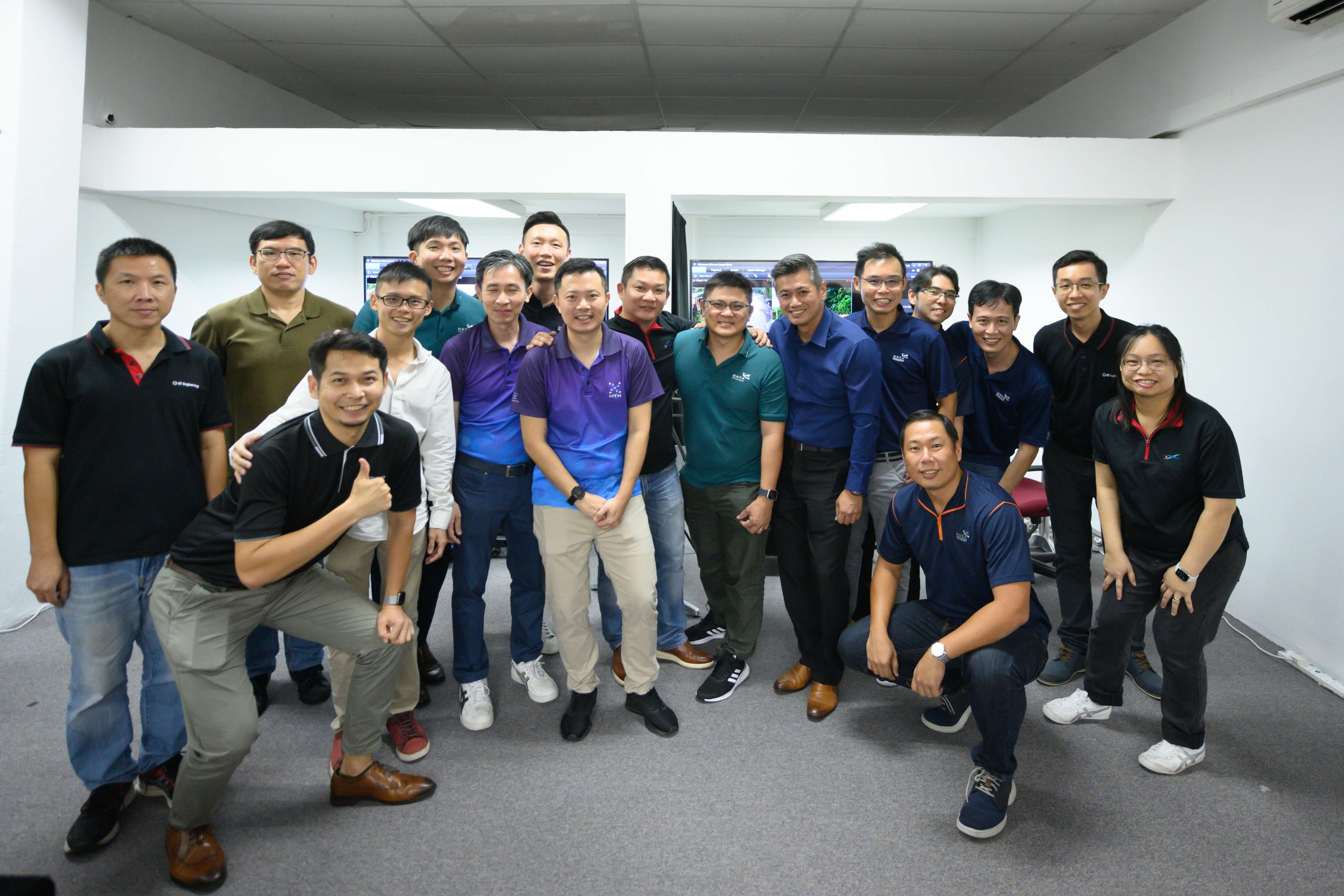
The HTX and DSTA team involved in the joint trial. (Photo: DSTA)
5G may have been around since 2019 for commercial use, but its adoption into state-of-the-art technologies around the world is still in the works.
From October 2022 to June 2023, HTX and the Defence Science and Technology Agency (DSTA) successfully trialled if 5G can be used to support real-time exchange of high-volume information between ground users and command centres. The joint trial aimed to boost the operational effectiveness and efficiency of officers in time-critical scenarios, and was done at the 5G@Sentosa testbed, a public-private sector collaboration led by the Government Technology Agency (GovTech), the Sentosa Development Corporation (SDC), and Singtel.
Features tested include Network Slicing, the carving out of a specific portion for the 5G network to dedicate it to certain applications or use, and Multi-access Edge Computing (MEC), which allows for the integration of multiple platforms including cameras, edge analytics, and unmanned systems, such as drones and robots.
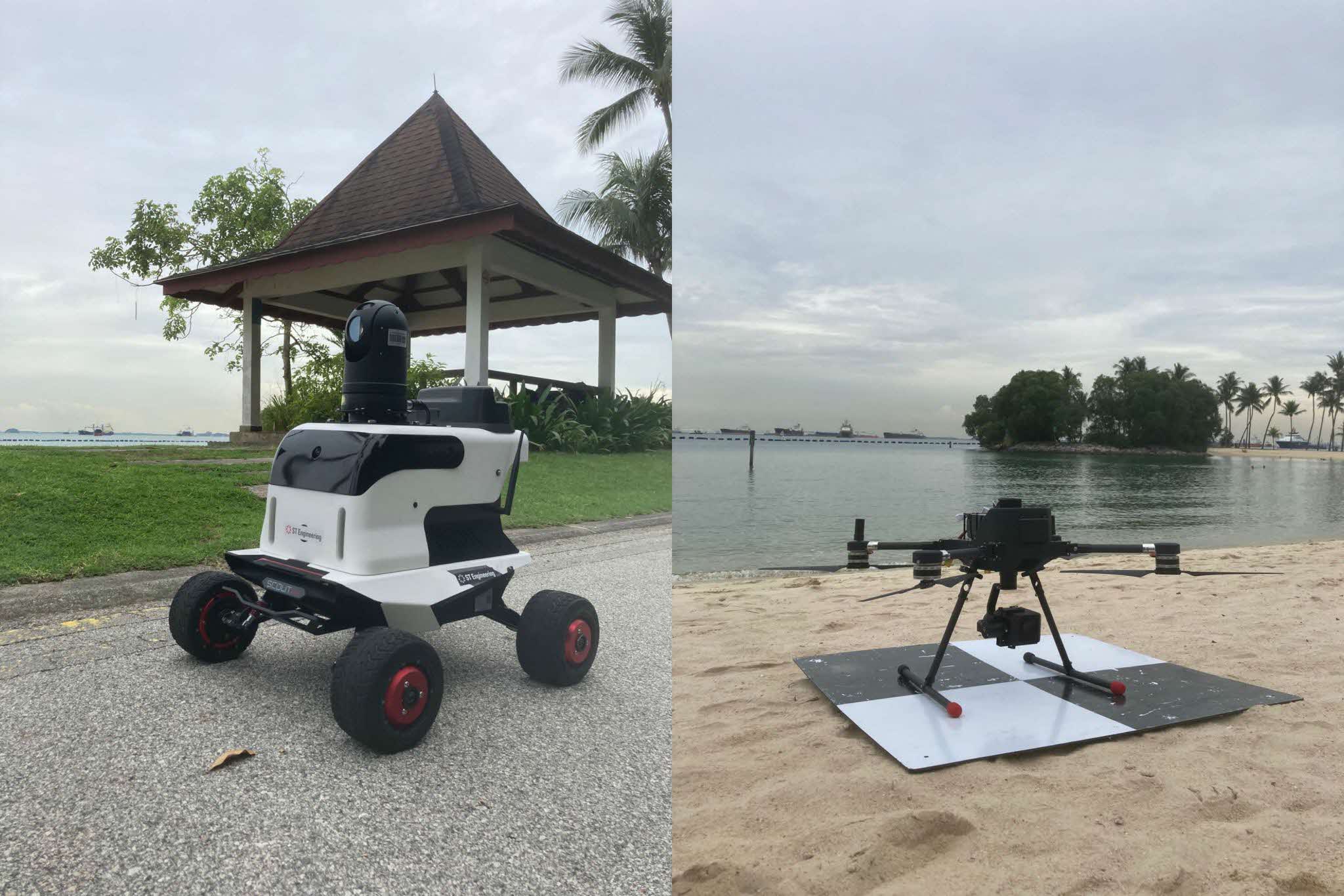
Some of the drones and robots that were trialled at the 5G@Sentosa testbed. (Photo: HTX)
The difference between 4G LTE and 5G
For the layperson, 5G equals faster download speeds and better-quality videos. For the Home Team, the benefits are somewhat similar. 5G’s wider bandwidth means that remote cameras from multiple sources can now deliver higher-resolution video feeds in real-time to command centres to improve situational awareness.
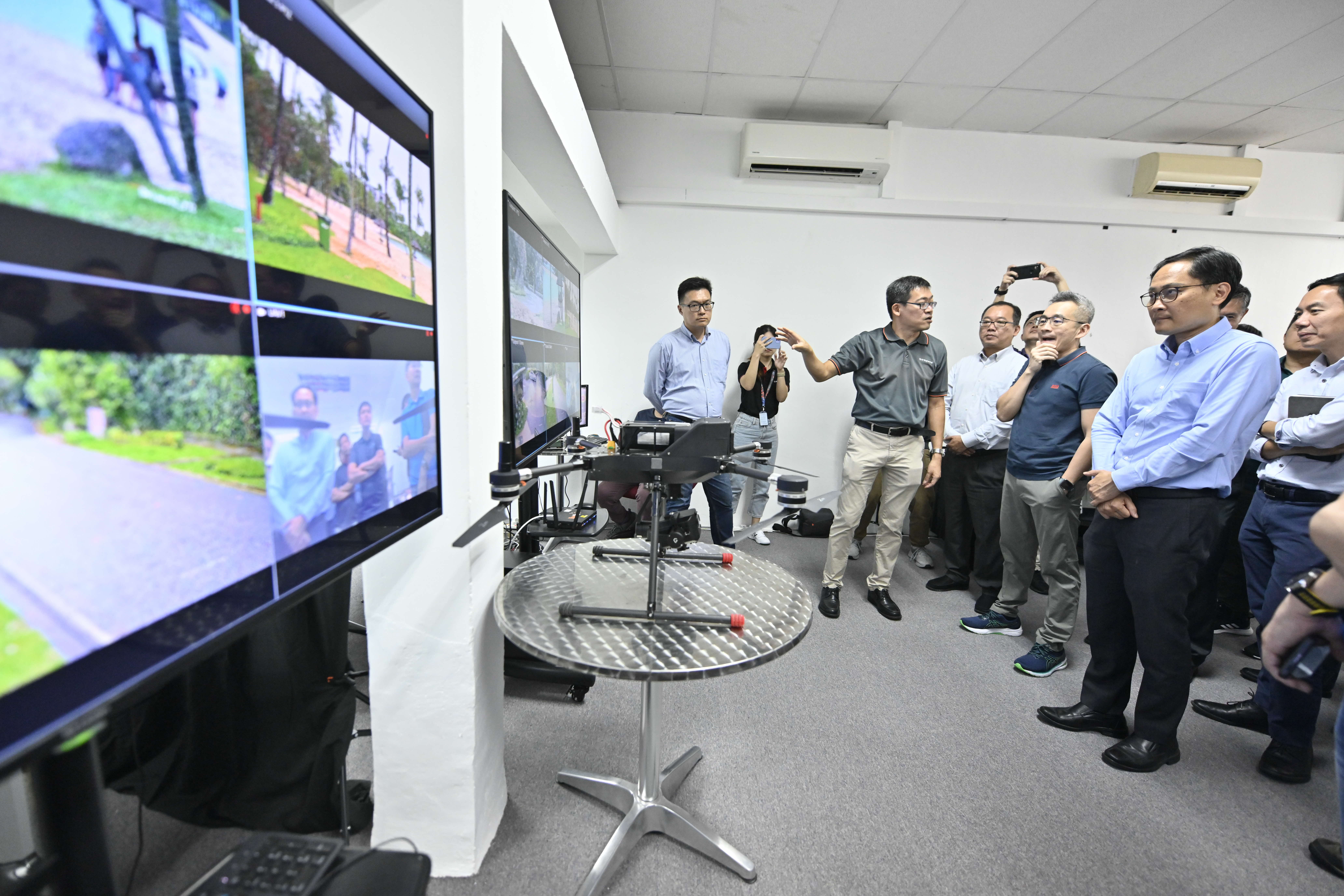
HTX, DSTA, and other Home Team personnel were invited to attend a session where a demo of the DSTA-HTX trial was presented. Real-time video footage from different unmanned systems running on 5G network that were deployed at Tanjong Beach can be seen on screen. (Photo: DSTA)
5G also offers ultra-reliable low-latency connectivity, which is needed for effective remote control of time-critical systems such as drones, unmanned robots, and vessels. All these make a significant difference to the accuracy of data captured and efficiency of handovers in Home Team operations.
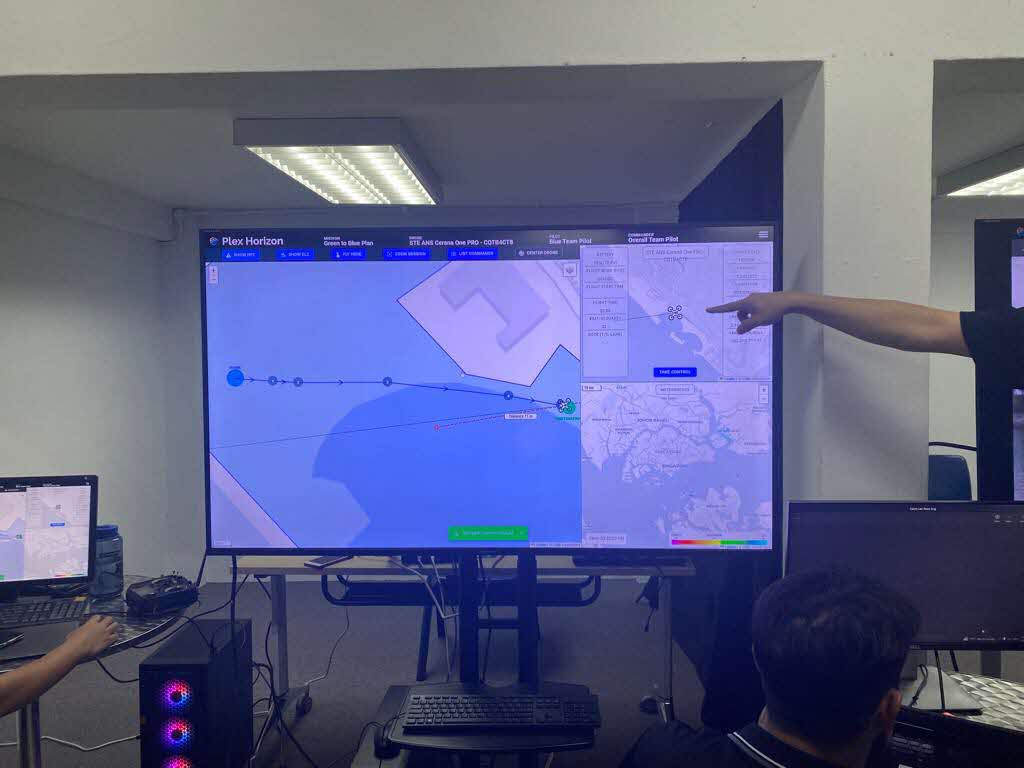
During the demo, the real-time process of transferring drone control after it crosses into a different security airspace was demonstrated. The real-time coordinates and moving path of the deployed drone can be seen on screen. (Photo: HTX)
All hands on deck, without actually being on the ground
The trial also showed that tapping on the 5G network enables officers to collaborate remotely and more effectively, as it improved situational awareness and responsiveness.
The time-consuming process of having to physically travel from one place to another to check out an alert is eliminated as Home Team officers can now monitor and survey areas from a virtual command post by wearing Mixed Reality (MR) glasses. Faster decisions can be made as commanders collaborate anywhere and at any time, thus making operations more effective and efficient.
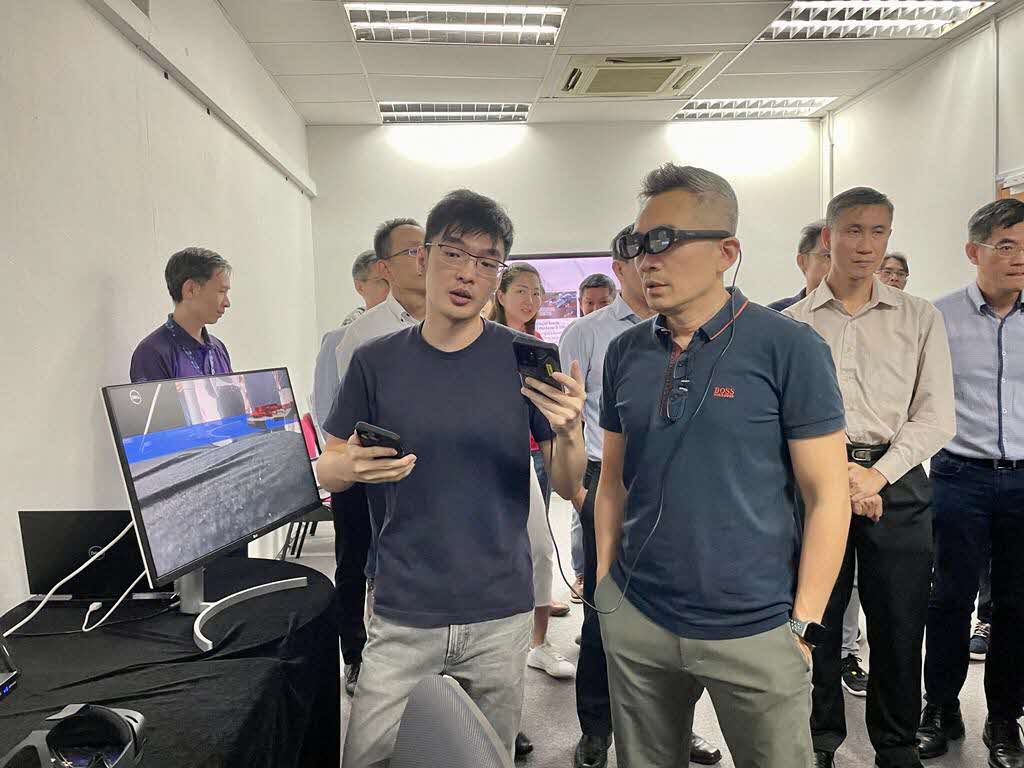
HTX’s Chief Executive, Mr Chan Tsan, and well as Home Team officers and other personnel who attended a session had the opportunity to try on the MR glasses and access the virtual command post. They could interact with the virutal map of Sentosa to see how ground robots and drones can be operated remotely. (Photo: HTX)
Unmanned systems on the 4G LTE network requires officers to be deployed alongside them. Drones also need to be flown in range of its pilot. With 5G, these systems can be controlled anywhere, which means there is greater flexibility in the deployment of assets and manpower.

A drone on 5G network controlled remotely by its pilot. (Photo: DSTA)
More thorough sweep-throughs
Wired and fixed cameras that are the norm now face the limitation of being able to only transmit real-time footage of an area from certain angles or distances. With 5G, however, various sources such as wireless static cameras, drones, and body-worn cameras can be deployed at the same time, which increases situational awareness on ground and from greater heights.
The reliability of 5G’s Network Slicing also means that the connectivity is not affected in crowded areas or in the event of a critical scenario, where a surge in connections to a network can slow down transmission of data. Last but not least, a large number of devices can be connected to the 5G network at any one time, which in turn allows for the maximisation of resources.
Being forward-looking
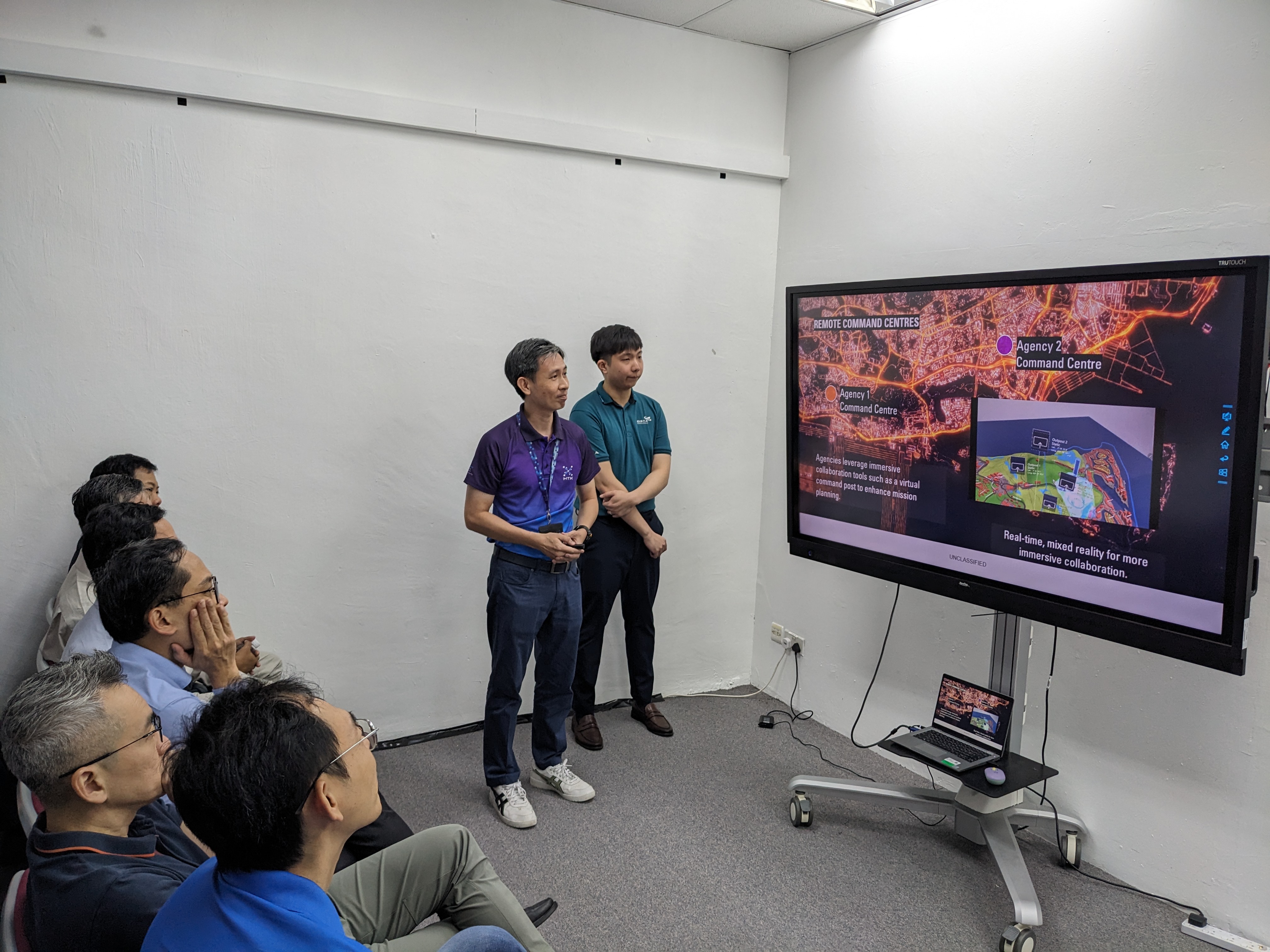
Mr Michael Woon, Head of Enterprise Comms & Digital Infra at HTX (right), and Mr Chua Xi Hong, Programme Manager of Digital Platforms Infocomm Infrastructure at DSTA (left), presented the operational narrative and conclusions of the DSTA-HTX joint trial to Home Team officers and other personnel. (Photo: HTX)
Both HTX and DSTA have kindred objectives in pursuing technological solutions that are unique to the Home Team and MINDEF to support public safety and security. With two heads being better than one, the collaboration of the joint trial was only natural, and is part of MINDEF’s and MHA’s continuous efforts to safeguard homeland security.
For HTX, the trial is a first for the agency in putting together multiple 5G assets on a 5G Network Slice and MEC. HTX will be looking into ways to progressively onboard selected Home Team assets onto the 5G network and leverage Network Slicing to overcome the limitations faced by current technologies during network congestion.

![[FEATURED NEWS] Beating hi-tech scams with hi-tech systems](/Cwp/assets/htx/images/listing-card-placeholder.png)